Weekly Current Affairs (1st to 7th January 2025) | General Test Preparation for CUET UG - CUET Commerce PDF Download
End of Russian Gas Transit via Ukraine
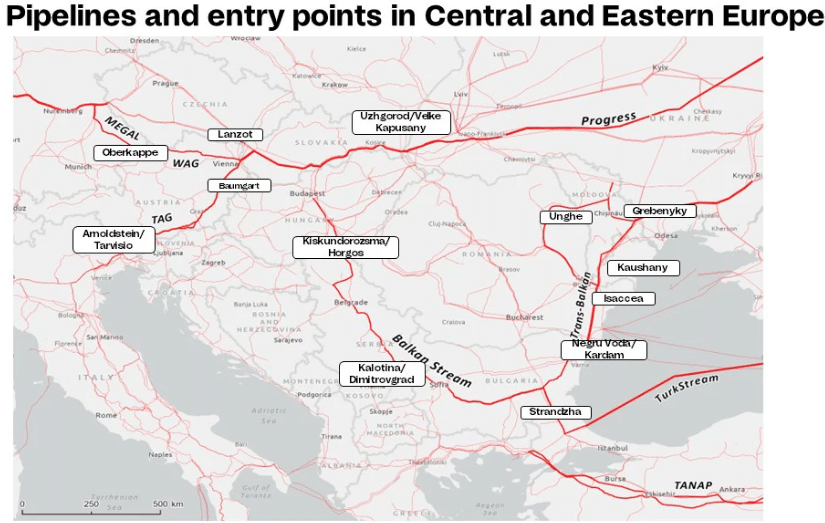
Why in News?
- The termination of Russian gas supplies through Ukraine represents a significant shift in the energy dynamics of Europe. This decision follows Ukraine's refusal to extend its transit agreement with Gazprom, which expired on January 1, 2024. The ongoing conflict between Ukraine and Russia has complicated energy discussions, prompting Europe to look for alternative energy sources.
Key Takeaways
- Russian gas exports to Europe have drastically fallen since the February 2022 invasion of Ukraine.
- By December 2023, exports via Ukraine decreased from approximately 65 billion cubic metres (bcm) to less than 14 bcm.
- Russia's market share in the European gas market dropped from 35% to around 8% due to reduced dependency on Russian energy.
Additional Details
- Economic Impact: The cessation of gas transit could result in Russia losing about $5 billion in sales from this route, while Ukraine stands to earn between $800 million and $1 billion annually in transit fees.
- The European gas market saw record price increases in 2022 due to the reduced supply from Russia, although a similar surge is unlikely given the current lower volumes.
- Affected Regions: Austria and Slovakia are particularly impacted by the end of Russian gas transit, with Austria previously relying heavily on this route and Slovakia sourcing about two-thirds of its gas from Gazprom.
- Both countries have successfully diversified their energy supply sources to minimize potential disruptions.
- Alternative Supply Options: With the majority of Russian gas routes closed, buyers are actively seeking alternatives. The TurkStream pipeline provides limited capacity to Turkey and neighboring regions. Slovakia can now source gas from Hungary, Austria, the Czech Republic, and Poland, while the Czech Republic plans to boost imports from Germany.
- Moldova’s Situation: Moldova, which receives around 2 bcm of gas annually from Russia, has been affected by Gazprom's suspension of supplies due to unpaid bills. To cope, Moldova aims to reduce its consumption by one-third and has diversified its energy sources.
- Historical Context: The Urengoy-Pomary-Uzhgorod pipeline, established during the Soviet era, has been a vital route for Russian gas to Europe, traversing Ukraine and branching out to various European nations. The evolving geopolitical landscape is likely to impact the future of this energy corridor.
In summary, the end of Russian gas transit through Ukraine represents a pivotal moment in European energy policies and market dynamics, compelling nations to explore alternative energy sources amidst shifting geopolitical realities.
Bhopal Toxic Waste Disposal Begins in Pithampur

Why in News?
- The removal of hazardous waste from the former Union Carbide factory in Bhopal has commenced. This significant step follows a strict directive from the Madhya Pradesh High Court, urging immediate action to clear the contaminated site. The factory was the source of a catastrophic leak of the toxic gas methyl isocyanate in December 1984, leading to thousands of fatalities and ongoing health problems for many individuals in the area.
Key Takeaways
- The Madhya Pradesh High Court has set a four-week deadline for the removal of toxic waste.
- Authorities plan to start the waste transfer process soon, aiming for completion by January 3, 2025.
- Incineration of the waste will take place in Pithampur, with rigorous monitoring for safety.
Additional Details
- Court Mandate: The High Court's directive emphasizes a history of inaction, pushing for urgent waste removal procedures.
- Incineration Procedures: The waste will be incinerated at Pithampur, with initial tests to check for harmful residues. If found safe, the process will continue; otherwise, it may take up to nine months.
- Environmental Safeguards: To mitigate air pollution, emissions from the incinerator will be filtered through a four-layer system. Continuous monitoring will ensure adherence to environmental regulations, and the resultant ash will be buried securely to avoid soil and water contamination.
The Bhopal gas tragedy remains a poignant reminder of industrial negligence and its devastating consequences. The recent actions signify a crucial step toward addressing the historical injustices faced by the affected community and ensuring environmental safety.
India-Pakistan Nuclear Agreement Update
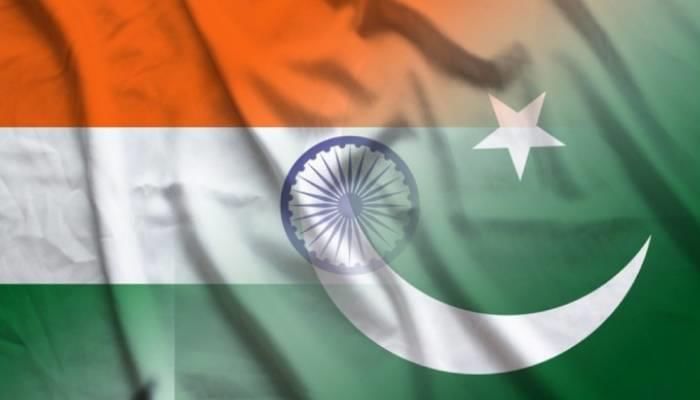 Why in News?
Why in News?
- On January 2, 2025, India and Pakistan engaged in an exchange of information regarding their respective nuclear installations. This exchange is part of an ongoing annual agreement that has been maintained for over three decades, aimed at preventing attacks on each nation's nuclear facilities. Alongside the nuclear information, details about civilian prisoners and fishermen held in custody by both countries were also exchanged, highlighting the significance of this process despite ongoing tensions between them.
Key Takeaways
- The nuclear agreement was signed on December 31, 1988, and came into force on January 27, 1991.
- Both countries exchange lists of nuclear installations annually on January 1, with 34 consecutive exchanges completed to date.
Additional Details
- Agreement on the Prohibition of Attack Against Nuclear Installations and Facilities: This bilateral agreement prohibits India and Pakistan from attacking each other's nuclear facilities or supporting third-party attacks against them.
- The recent exchange involved India providing details of 381 civilian prisoners and 81 fishermen in its custody, while Pakistan reciprocated with information about 49 civilian prisoners and 217 fishermen believed to be Indian.
- India has requested the expedited release of 183 Indian fishermen and civilian prisoners who have completed their sentences, emphasizing the humanitarian aspect of these exchanges.
This annual exchange of information not only reinforces the commitment to nuclear safety but also plays a crucial role in maintaining a dialogue between the two nations, contributing to stability in a historically volatile relationship.
Lokpal Day to be Observed on January 16
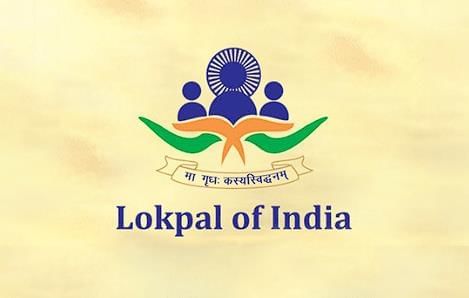 Why in News?
Why in News?
- The Government of India has officially designated January 16 as "Lokpal Day." This decision was made during a meeting held on March 14, 2024. The inaugural observance is set for January 16, 2025, and will feature Chief Justice of India, Sanjiv Khanna, as the chief guest. The event will take place at the Zorawar Auditorium, Manekshaw Centre in New Delhi.
Key Takeaways
- January 16 is designated as "Lokpal Day" to commemorate the establishment of the Lokpal in India.
- The inaugural event will highlight the Lokpal's role in enhancing transparency and accountability in governance.
Additional Details
- Significance of Lokpal Day: This day aims to raise awareness about the Lokpal's functions in promoting good governance and addressing corruption.
- The inaugural event will include the presence of esteemed dignitaries, judges from the Supreme and High Courts, and heads of investigative agencies, along with the recognition of individuals for their contributions to justice and public service.
What is Lokpal?
Lokpal is a national-level institution tasked with investigating and addressing corruption involving public officials in India. It operates as an "Ombudsman" body, responsible for handling complaints and grievances related to corruption.
History and Genesis
- In the 1960s, the Administrative Reforms Commission (ARC) recommended the establishment of Lokpal and Lokayukta.
- The concept was first proposed by Ashok Kumar Sen, with the term "Lokpal" introduced by Dr. L. M. Singhvi in 1963.
- The Lokpal Bill was initially passed in 1968 but lapsed. It saw multiple introductions before becoming law in 2013, following the Anna Hazare movement.
Lokpal and Lokayukta Act, 2013
- Selection Committee: Comprises the Prime Minister, Speaker of Lok Sabha, Leader of Opposition, Chief Justice of India, and an eminent jurist.
- Jurisdiction: Encompasses the Prime Minister, Ministers, Members of Parliament (MPs), and government employees.
- Composition: The Lokpal consists of a chairperson and up to 8 members, with at least half being from judicial backgrounds, ensuring diversity (including representation from SCs, STs, OBCs, minorities, and women).
- Powers: The Lokpal holds authority over investigative agencies like the CBI and can direct investigations.
- Foreign Donations: Its jurisdiction includes donations exceeding Rs. 10 lakh under the Foreign Contribution (Regulation) Act.
- Amendment in 2016: Enabled the largest opposition leader to join the selection committee if the Leader of Opposition is unavailable; also modified asset and liability reporting rules for public officials.
Structure of the Lokpal Body
The Lokpal of India is composed of a Chairperson and six members. Justice A. M. Khanwilkar is the current Chairperson, having assumed office on March 10, 2024. This body was established under the Lokpal and Lokayuktas Act, 2013, designed to combat corruption within public offices.
Future of Lokpal
The Lokpal aims to enhance its effectiveness in fighting corruption by focusing on increasing public awareness and engagement. Future initiatives may involve outreach programs and partnerships with various stakeholders to foster a culture of accountability in public service.
Ebola Virus Study Reveals Skin Transmission Route
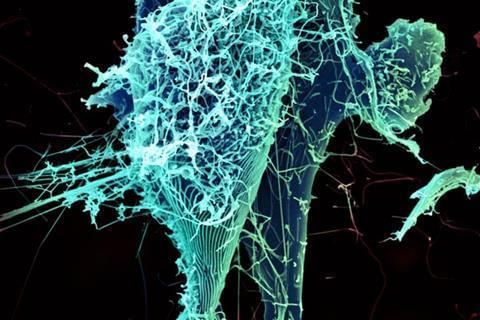 Why in News?
Why in News?
- The Ebola virus disease (EVD) continues to pose significant public health challenges, especially in East-Central and West Africa. Recent research published in *Science Advances* has uncovered crucial insights into the potential for the Ebola virus (EBOV) to spread through the skin, highlighting the importance of this newly identified transmission route. This study was conducted by researchers from the University of Iowa Health Care, Texas Biomedical Research Institute, and Boston University.
Key Takeaways
- EBOV transmission primarily occurs via direct contact with infected bodily fluids such as saliva, urine, faeces, and semen.
- Contaminated clothing and bedding can also facilitate the virus's spread.
- Recent evidence shows that infectious EBOV may be present on the skin's surface, particularly during the later stages of infection.
Additional Details
- Research Methodology: Researchers created a human skin explant model using full-thickness skin biopsies from healthy individuals. This model allowed for the examination of how EBOV penetrates the skin layers.
- The explants were oriented dermal side down in culture media, with the virus introduced from below, mimicking the virus's journey from the bloodstream to the skin's surface.
- Key Findings: The study identified various cell types in the skin that support EBOV infection, including endothelial, myeloid, and fibroblast cells in the dermis, which tested positive for EBOV.
- Within three days, the virus was found to reach the epidermis, infecting keratinocytes, indicating a potential route for person-to-person transmission through skin contact.
The findings of this study open new avenues for research on the role of skin in EBOV transmission. Future studies may focus on developing targeted antiviral strategies that incorporate the skin's involvement in the infection process. Understanding the cellular dynamics of EBOV infection in the skin will likely enhance public health responses during outbreaks. The researchers emphasized the necessity for more robust models to study EBOV skin infection, which could improve insights into viral load and transmission dynamics, ultimately leading to more effective containment measures.
India Updates GDP Base Year to 2022-23
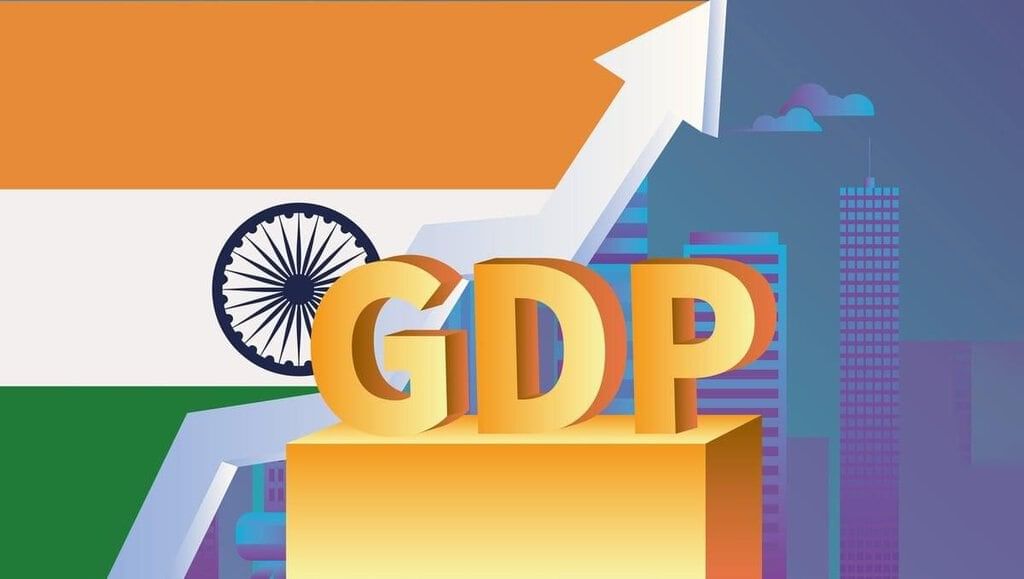 Why in News?
Why in News?
- The Government of India has recently made a significant decision to change the base year for calculating the Gross Domestic Product (GDP) from 2011-12 to 2022-23. This update aims to provide a more accurate reflection of the current economic conditions and improve policy-making. The revision takes into account the shifts in economic activities, consumption patterns, and industry developments over the last decade.
Key Takeaways
- The base year for GDP calculations in India has been updated to 2022-23.
- This change is intended to reflect the contemporary economic landscape more accurately.
- New sectors and digital transformations in the economy necessitate this update.
- The revision will align GDP figures more closely with other economic indices.
Additional Details
- Base Year: A base year is used as a reference point for economic indices, typically set at an arbitrary level of 100. It allows for tracking price changes over time and facilitates inflation adjustments, enabling comparisons of economic growth across different periods.
- Importance of Updating the Base Year: Keeping the base year current ensures that GDP data accurately reflects current economic activities, consumption trends, and industrial contributions. An outdated base year risks misrepresenting the economy, potentially leading to ineffective policy decisions.
- Reasons for the Shift to 2022-23: The Indian economy has undergone significant changes, including the emergence of new sectors and rapid digitalization, particularly in the aftermath of the pandemic. These developments highlight the need for a more current base year.
- Implications of the Change: This update will lead to revisions of past GDP rates, providing a clearer representation of the economy. It will assist the government in formulating informed economic policies and ensure better alignment with indices like the Wholesale Price Index (WPI) and Consumer Price Index (CPI).
- Status of the Revision Exercise: The Ministry of Statistics and Programme Implementation has set up a 26-member Advisory Committee on National Accounts Statistics, chaired by Biswanath Goldar, to oversee the revision process and ensure consistency in data reporting.
- GDP Calculation Methods in India: India calculates GDP using the factor cost method and the expenditure method, each focusing on different aspects of the economy.
- Data Collection Process: The Central Statistics Office (CSO) is responsible for collecting macroeconomic data, conducting annual surveys, and collaborating with various agencies to ensure accurate GDP calculations.
In conclusion, updating the base year for GDP calculations is a critical step for the Government of India to ensure that economic data accurately reflects current realities. This change will enhance the understanding and formulation of economic policies moving forward.
Gujarat’s First Coastal Bird Census Begins Soon
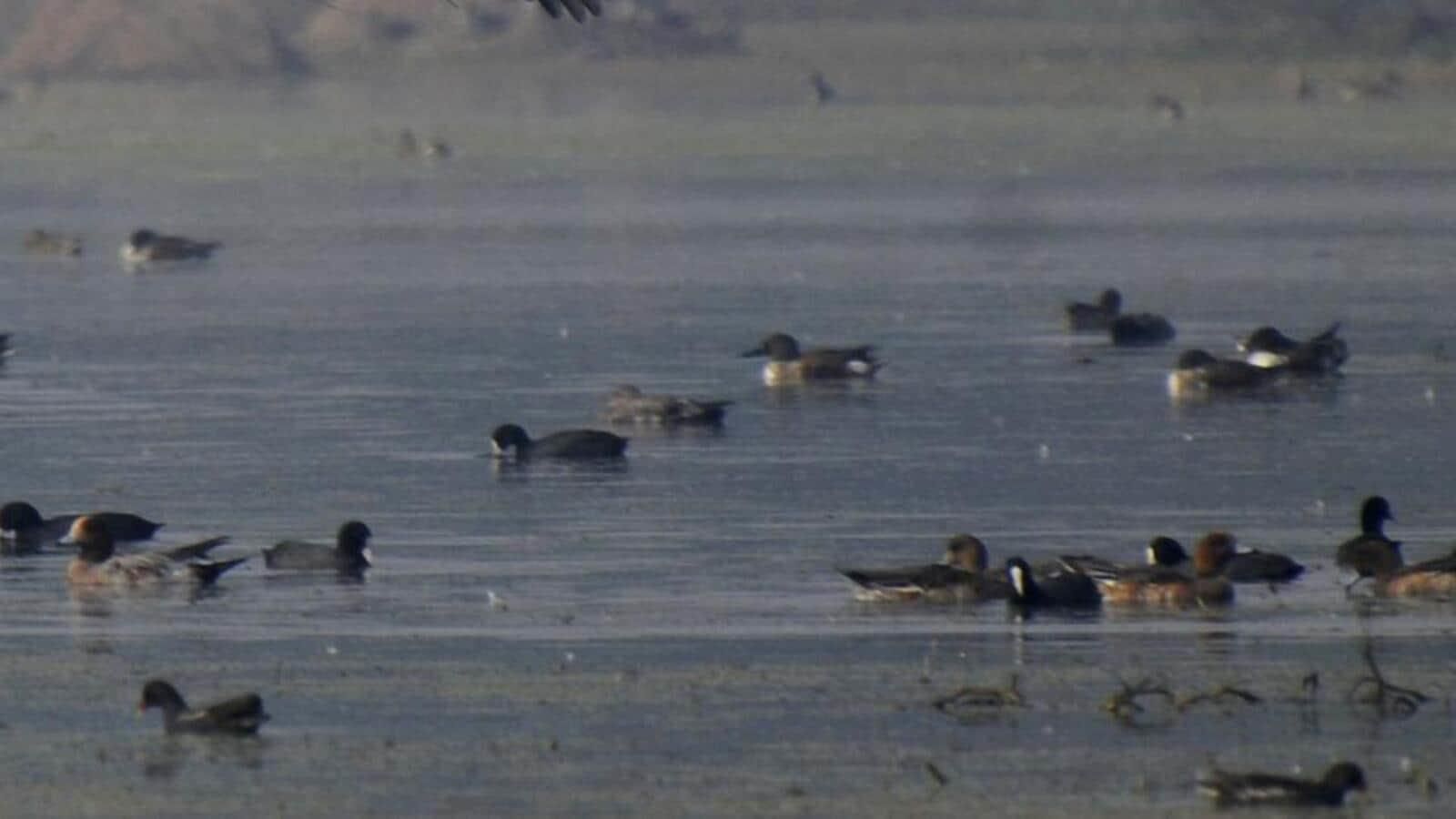 Why in News?
Why in News?
- The government is set to launch India’s first-ever census focused on coastal and wader birds. This significant event is scheduled to take place at the Marine National Park and Sanctuary in Jamnagar from January 3 to 5, 2025. The primary objective of this census is to improve knowledge regarding bird populations and their habitats. This initiative is a collaborative effort involving the state forest department and the Bird Conservation Society of Gujarat (BCSG). Bird enthusiasts, experts, and researchers from across the country are anticipated to participate actively.
Key Takeaways
- The census is the first of its kind in India, focusing on coastal and wader birds.
- It will be held at the Marine National Park and Sanctuary in Jamnagar.
- Over 300 species of birds, including rare waders, are found in Jamnagar.
- This initiative is intended to enhance conservation efforts and knowledge about avian populations.
Additional Details
- Marine National Park and Sanctuary: This area is recognized as India’s first designated marine national park, covering about 170 km of coastline and featuring 42 islands located between Okha and Navlakhi. It was established to protect marine biodiversity and mangrove ecosystems. During low tide, visitors can explore the unique marine life on foot, a feature not commonly available in other marine protected areas where scuba diving is typically required.
- Bird Diversity: The Jamnagar district is notable for its rich bird diversity, with over 300 species of local and migratory birds, including more than 50 species classified as wader birds. Rare species such as the Crab Plover (Shankhlo) and the Great Knot (Moto Kichadiyo) are prevalent in this region, highlighting its importance for avian conservation.
- Central Asian Flyway: The Marine National Park is positioned within the Central Asian Flyway, a vital migratory pathway for numerous bird species extending from the Arctic to the Indian Ocean. This area serves essential breeding and wintering grounds, significantly contributing to global bird diversity.
- Conservation Efforts: The Gujarat government is committed to bird conservation through various initiatives. The Forest Department conducts scientific assessments of bird populations to gather crucial data, helping identify new habitats and evaluate population densities. Understanding the seasonal timing of bird migrations is also essential for effective habitat management, ensuring sustainable preservation of avian biodiversity in the region.
This coastal bird census marks a significant step towards enhancing bird conservation efforts in Gujarat and across India. By gathering vital information about bird populations and their habitats, the initiative aims to foster greater awareness and protection of these key ecological resources.
What is Human Metapneumovirus (HMPV)?
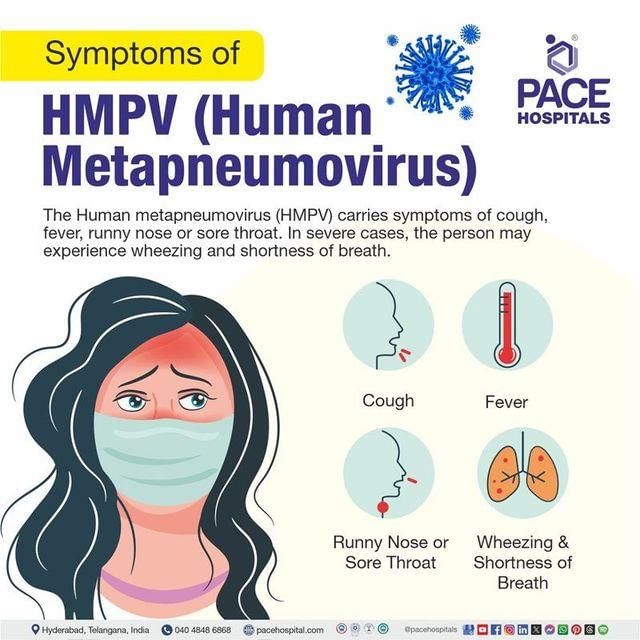 Why in News?
Why in News?
- Recently, China's disease control authority introduced a pilot monitoring system to track pneumonia cases of unknown origin, anticipating a rise in respiratory infections during the winter months. An increase in overall infections has been noted, particularly in northern provinces, with human metapneumovirus (HMPV) identified as a significant pathogen affecting younger populations. Despite viral claims of a health emergency circulating on social media, no official declaration has been made.
Key Takeaways
- HMPV Identification: First recognized in 2001.
- Virus Family: Belongs to the Pneumoviridae family, which includes respiratory syncytial virus (RSV).
- Infection Patterns: Common during winter and early spring, especially in vulnerable populations.
Additional Details
Symptoms of HMPV Infection:
- Cough
- Runny or blocked nose
- Sore throat
- Fever
- Wheezing
- The incubation period typically ranges from three to six days. Most individuals recover without medical intervention within a few days, but some may develop complications such as bronchitis or pneumonia, which may require medical attention.
Transmission: HMPV is transmitted through direct contact with infected individuals or contaminated surfaces. Key transmission methods include:
- Respiratory secretions from coughs or sneezes.
- Close contact, such as shaking hands or hugging.
- Touching contaminated objects, followed by touching the face.
Treatment Options: There is currently no vaccine or specific antiviral treatment for HMPV. Most patients manage symptoms with:
- Over-the-counter medications for fever and pain.
- Decongestants to alleviate nasal congestion.
Preventative Measures: Important actions to reduce the risk of HMPV infection include:
- Frequent handwashing with soap and water.
- Avoiding close contact with infected individuals.
- Refraining from touching the face, nose, or eyes.
- Wearing a mask during potential exposure.
- Individuals with pre-existing lung conditions should take extra precautions.
In response to rising cases, the National Centre for Disease Control (NCDC) in India is monitoring respiratory infections closely and collaborating with international health agencies to assess the situation. Recent data indicates a rise in acute respiratory infections, including HMPV, although the overall intensity of respiratory diseases in China is reportedly lower than the previous year. A seasonal increase in respiratory pathogens is expected in the northern hemisphere during winter.
Adopting F-T-P Approach for Sustainable Sugar Industry
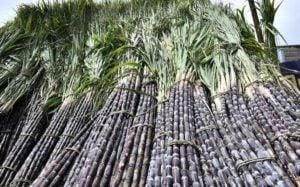 Why in News?
Why in News?
- The biofuel sector is at a crucial juncture where sustainable development, energy security, and climate action come together. The Feedstock-Technology-Product (F-T-P) approach serves as a structured framework that integrates biofuels into diverse industries, particularly the sugar sector. This strategy aligns with India's National Policy on Biofuels 2018 and aims to position the sugar industry as a key player in promoting sustainable growth.
Key Takeaways
- India's agricultural diversity enhances its potential for biofuel production.
- The F-T-P approach categorizes feedstocks into three generations for effective scalability.
- Technological advancements are crucial for the success of the biofuel industry.
- Integrated biorefineries redefine production capabilities beyond just ethanol.
Additional Details
Feedstock Diversity: India's agricultural diversity allows it to lead in biofuel production by categorizing feedstocks into three generations:
- First-Generation Feedstocks (1G): Include molasses, sugarcane syrup, and surplus grains. They are easily accessible but need management to avoid food security issues.
- Second-Generation Feedstocks (2G): Consist of agricultural residues like bagasse and straw. These are sustainable alternatives promoted by the Ministry of New and Renewable Energy (MNRE) for research in 2G ethanol technologies.
- Third-Generation Feedstocks (3G): Involve algal biofuels, which are still in experimental stages, require less land, and have high yield potential.
Technological Innovations: The success of the biofuel sector relies on advancements such as:
- Alcohol-to-Jet (ATJ) Technology: Key to the aviation sector's quest for decarbonization solutions.
- Bio-Methanation: Part of the SATAT initiative, this technology converts organic waste into biogas, supporting a circular bioeconomy.
- Lactic Acid Technologies: These developments focus on creating bioplastics from polylactic acid (PLA), promoting environmental sustainability.
Expanding Product Horizons: The F-T-P framework allows biorefineries to produce a variety of high-value outputs:
- Ethanol Production: The Ethanol Blending Programme (EBP) has boosted ethanol demand, emphasizing the need for scaling 2G production.
- Sustainable Aviation Fuel (SAF): A lucrative opportunity as the aviation industry shifts towards biofuels.
- Renewable Chemicals and Materials (RCM): Production of bio-based chemicals enhances profitability while reducing fossil fuel dependency.
- Bioplastics and Bio-Bitumen: Rising demand for sustainable materials supports eco-friendly infrastructure and packaging solutions.
Integrated Biorefineries: These facilities embody the F-T-P approach, combining feedstock diversity, advanced technologies, and varied outputs to:
- Optimize resource utilization.
- Minimize waste through circular production models.
- Serve as sustainable industrial hubs promoting rural development.
The F-T-P approach represents a pragmatic pathway to fulfill India's biofuel goals. By emphasizing diverse feedstocks, innovative technologies, and a broad product spectrum, the sugar industry can significantly contribute to India's green economy. The supportive policies from the government lay a robust foundation for industry stakeholders to foster collaboration, invest in research, and adopt sustainable practices.
Farmers’ Protests and Supreme Court Committee Update
Why in News?
- Recent developments have escalated the ongoing farmers’ protests at the Punjab-Haryana border. The Samyukta Kisan Morcha (Political) has opted not to engage with a high-powered committee formed by the Supreme Court to address their demands. On January 4, the Bharti Kisan Union (Ugrahan) also declined to meet with the committee, which has previously interacted with the Samyukta Kisan Morcha (Non-Political) though only lower-ranking leaders participated. This raises questions regarding the committee’s effectiveness and the farmers’ reluctance to engage.
Key Takeaways
- The farmers’ protests are a response to controversial agricultural laws perceived as threats to their livelihoods.
- The Supreme Court's committee was established to facilitate dialogue and address the farmers' concerns.
Additional Details
- Background of the Protests: The protests originated due to contentious agricultural laws that farmers argue jeopardize their livelihoods. They demand the repeal of these laws, leading to sustained demonstrations at the Punjab-Haryana border, reflecting broader issues in the agricultural sector.
- Supreme Court Committee’s Formation: Established on September 2, 2024, the committee's role is to engage with farmers and address their demands while aiming to ease blockades affecting public highways.
- Committee’s Mandate: Its primary objective is to encourage farmers to vacate highways, addressing the needs of marginalized agricultural communities facing economic hardships.
- Composition of the Committee: The committee is chaired by Justice (retd.) Nawab Singh and comprises experts in agriculture and rural economics, including BS Sandhu and Devinder Sharma, aimed at providing informed recommendations.
- Initial Findings: The first report, submitted on November 22, 2024, highlighted issues such as stagnant yields and rising costs, suggesting legal protections for minimum support prices (MSP) and direct income support for farmers.
- Current Developments: The committee is preparing its second report focused on increasing farm income, including discussions on MSP and consultations with agricultural stakeholders to form effective solutions.
In conclusion, the ongoing farmers’ protests and the Supreme Court committee's efforts illustrate the complex dynamics within the agricultural sector, emphasizing the need for effective dialogue and resolution strategies to address the pressing issues faced by farmers.
NYC Launches Congestion Pricing Initiative
 Why in News?
Why in News?
- As of January 2025, New York City has become the first city in the United States to implement a congestion pricing system. This initiative is designed to ease traffic congestion in its densely populated areas, particularly targeting drivers entering Manhattan’s central business district during peak hours, who will incur a fee of $9. The congestion problem has been pronounced, as NYC ranked among the most congested cities globally in 2023. The city draws inspiration from successful congestion pricing models in places like Singapore, London, Stockholm, and Milan.
Key Takeaways
- NYC is the first U.S. city to implement congestion pricing as of January 2025.
- The initiative aims to reduce traffic congestion, improve air quality, and generate revenue for public transport.
- Other global cities have successfully employed similar strategies.
Additional Details
What is Congestion Pricing? Congestion pricing is a strategy that charges drivers a fee to enter busy urban areas during peak times. Its objectives include reducing traffic congestion, enhancing air quality, and generating funds for public transportation enhancements. The system typically uses electronic tolling for efficient fee collection.
Global Examples: Various cities have adopted congestion pricing with different structures:
- In Singapore, the Electronic Road Pricing (ERP) adjusts charges based on real-time traffic conditions.
- London imposes a flat daily fee of £15 for entry into the congestion zone.
- Stockholm has fluctuating fees depending on time and season.
- Milan charges €5 daily, with additional fees based on vehicle emissions.
Benefits: The implementation of congestion pricing can lead to significant benefits, including:
- Revenue generation for transport infrastructure improvements, with NYC expecting to earn $15 billion.
- Environmental benefits, as cities like London and Milan have reported notable reductions in pollution levels since their pricing schemes were introduced.
- Economic and Environmental Impacts: The Metropolitan Transportation Authority in NYC anticipates that congestion pricing will fund crucial transport upgrades. In Singapore, the ERP program has proven financially self-sustaining since its launch. Studies indicate that air quality in London has improved, while Milan has seen approximately a 30% reduction in carbon emissions.
- Enhancing Quality of Life: Congestion pricing can enhance urban residents' quality of life. In Stockholm, traffic levels decreased by 25%, exceeding initial targets. Public transport users have reported better punctuality and reduced noise levels, contributing to a more pleasant urban environment.
- Potential for Implementation in India: Research indicates that Indian cities, like Mumbai, could gain from congestion pricing. The Urban Works Institute suggests potential benefits and challenges unique to Mumbai's context, advocating for customized solutions that consider local traffic patterns and public transport capabilities. Effective communication and raising public awareness are essential for successful implementation.
In summary, NYC's congestion pricing initiative represents a significant move towards modern urban traffic management, aiming to alleviate congestion while providing funding for essential transport upgrades and improving the urban environment.
US-China Science Agreement Sparks Global Debate
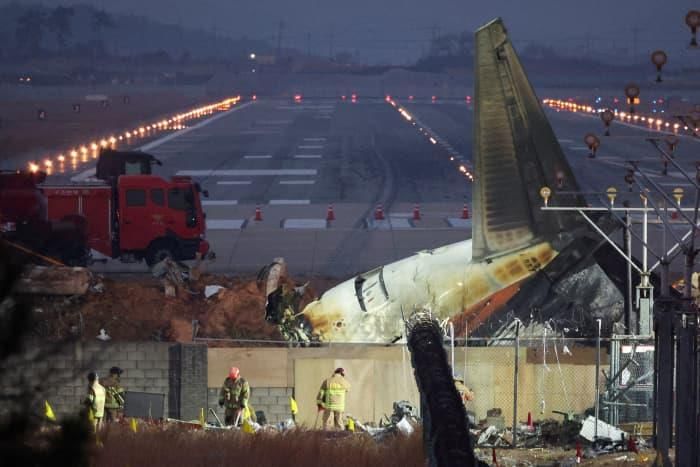 Why in News?
Why in News?
- On January 7, 2025, recent developments have highlighted the shifting dynamics in international scientific collaboration. On December 13, 2024, the United States signed a new bilateral science and technology agreement with China, renewing a pact that has existed for 45 years. This updated agreement narrows the scope of permitted joint research, introduces a dispute resolution mechanism, and limits collaborative topics, reflecting increasing global concerns over research security and the balance between security and openness.
Key Takeaways
- The new US-China agreement modifies previous collaboration norms.
- National security concerns are driving tighter controls over research collaborations.
- China has become a leader in global scientific research and patenting.
- International collaboration in science is at risk due to heightened security measures.
Additional Details
- US-China Scientific Relationship: This relationship has evolved from initial knowledge transfer to deeper collaboration, with thousands of Chinese scholars working in the US. However, recent security measures threaten this collaborative spirit.
- China's Rise in Global Research: In 1980, Chinese authors contributed less than 2% of articles in the Web of Science, while by 2023, they accounted for 25%, surpassing the US. Additionally, China now leads in U.S. patents issued to foreign companies, demonstrating its emergence as a global leader in advanced scientific fields.
- National Security Concerns: Nations are tightening research controls due to fears of espionage, particularly accusations against China regarding technology theft. The US has enacted the China Initiative and established the SECURE center to combat these threats.
- Global Responses: The European Union, Japan, Canada, Germany, and Australia have all implemented measures to enhance research security and address potential risks associated with collaborations with China.
The growing emphasis on security in research collaboration poses significant risks to international partnerships, which have historically led to innovative and high-impact research. As nations navigate these new security landscapes, it is essential to balance security measures with the need for open collaboration to foster continued scientific progress in an interconnected world.
|
164 videos|632 docs|1150 tests
|
FAQs on Weekly Current Affairs (1st to 7th January 2025) - General Test Preparation for CUET UG - CUET Commerce
| 1. What are the implications of the end of Russian gas transit via Ukraine for Europe? |  |
| 2. What measures are being taken for the disposal of toxic waste in Bhopal? |  |
| 3. What is the significance of the India-Pakistan nuclear agreement update? |  |
| 4. Why is Lokpal Day observed on January 16? |  |
| 5. What are the findings of the Ebola virus study regarding skin transmission? |  |
















